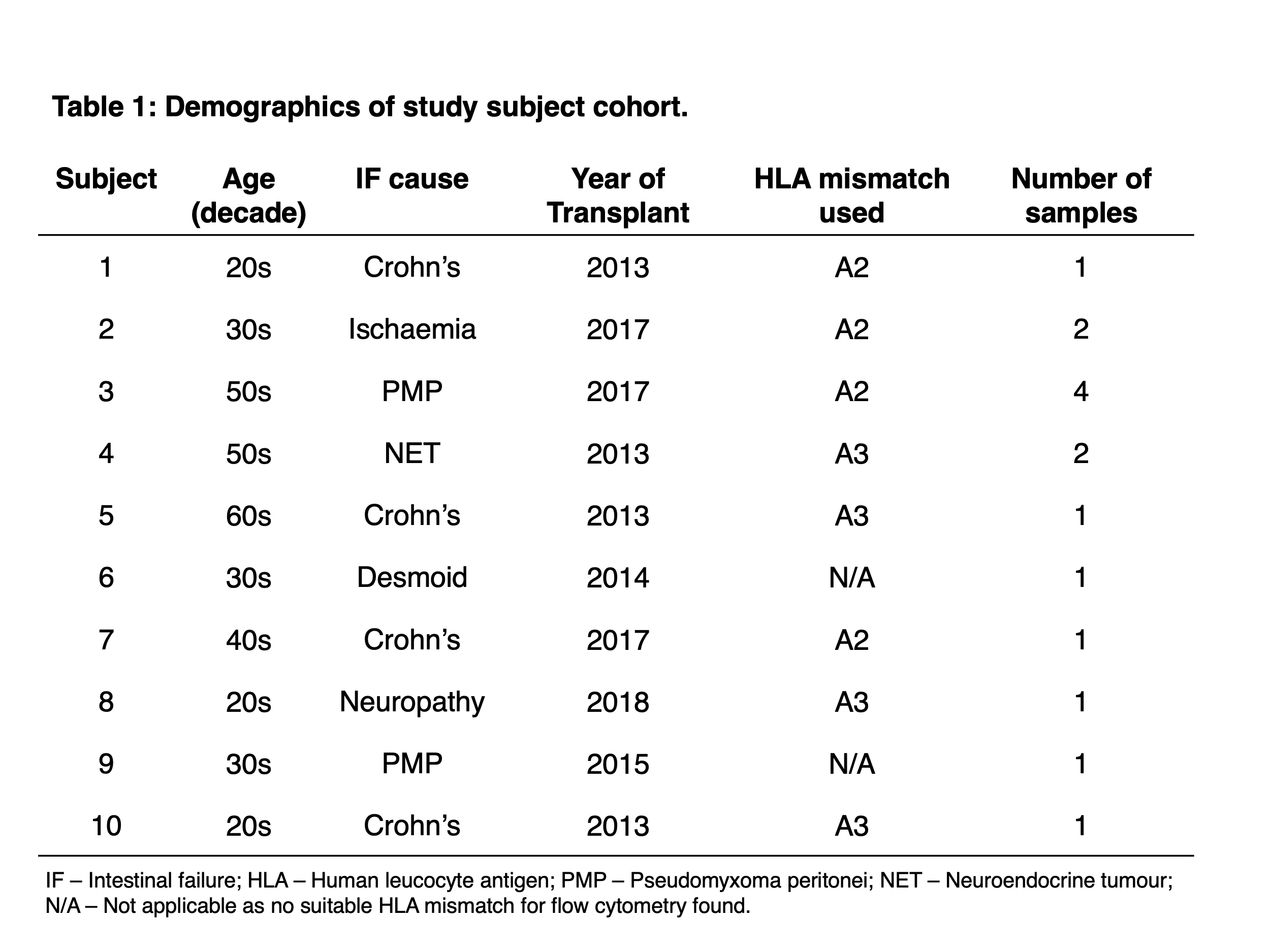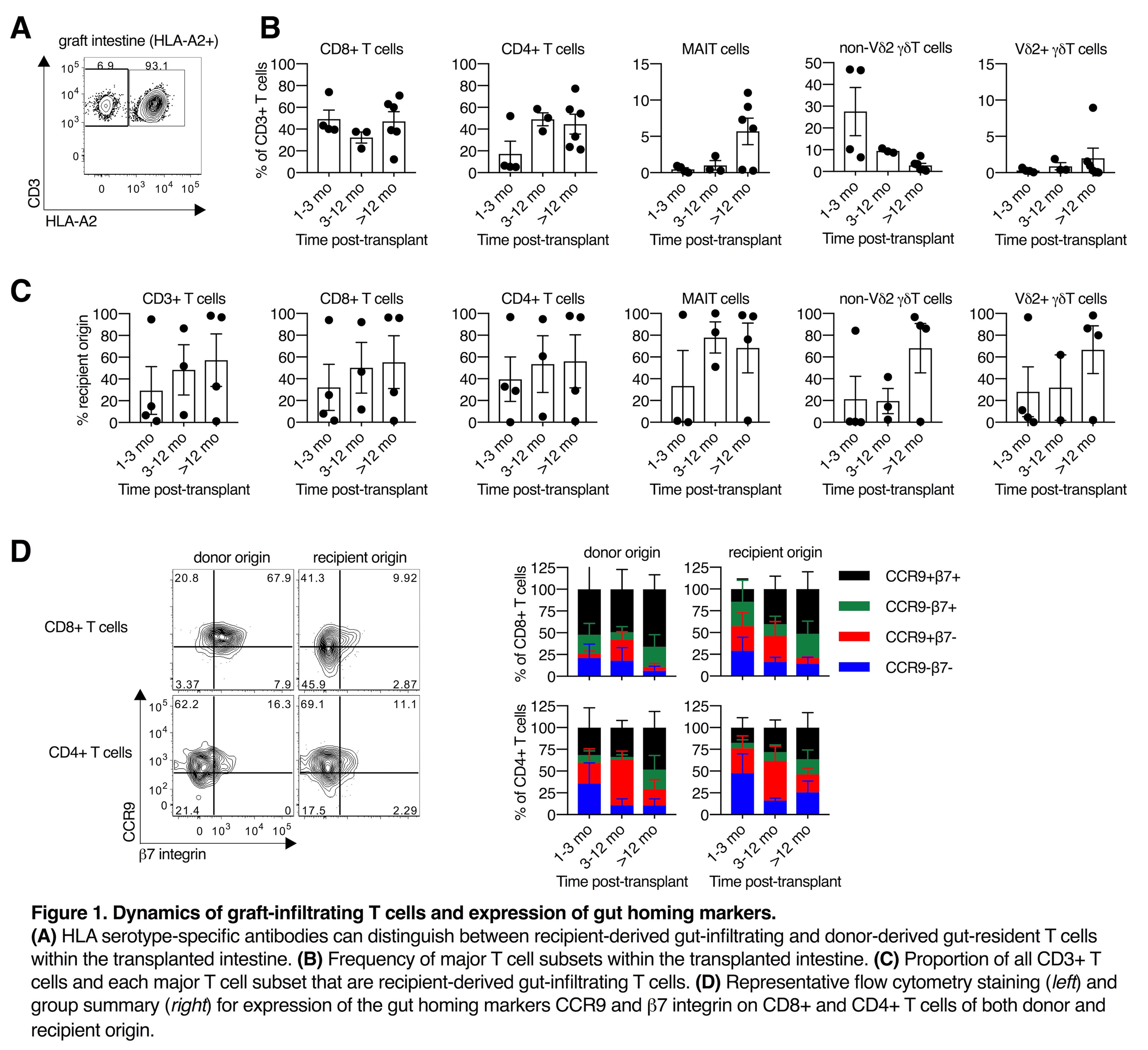Introduction: Early infiltration of recipient-derived T cells into an intestinal transplant graft is associated with rejection, which can lead to graft loss and death1. However, the infiltration dynamics of different T cell subsets are poorly understood, as are the mechanisms of entry. With the development of anti-integrin and -chemokine therapeutics, understanding whether pathways involved in gut-homing could be targeted for the prevention or treatment of early rejection is of significance.
Methods: Adult intestinal transplantation recipients were identified via longitudinal cohort studies at Oxford University Hospitals NHS Foundation Trust. Fifteen samples of intestinal graft biopsies were obtained from ten patients (Table 1) at various times after transplantation (23 days to 5 years).
Donor- and recipient-derived T cells in intestinal transplant mucosa were identified using flow cytometry and antibodies to discordant HLA Class I proteins (Fig 1A)1. Gut-homing molecules CCR9 and β7 integrin, and markers of conventional and innate-like T cell subsets were examined.

Results: The relative frequencies of key T cell subsets altered following transplantation (Fig 1B & C). Early post-transplant, CD8 and non-Vδ2 γδT cells dominated (28% and 49%, respectively). These early non-Vδ2 γδT cells were predominantly donor-derived. Innate-like MAIT and Vδ2+ γδT cells were rare (<1%) early post-transplant but recovered with time (6% and 2%, respectively). The fraction of recipient-derived T cells in the graft increased with time, with highly variable kinetics between subjects.
Early post-transplant, expression of CCR9 and β7 integrin was low on recipient-derived T cells, with 29% of CD8 and 48% of CD4 T cells negative for both markers. In contrast, 52% of CD8 and 31% of CD4 donor-derived T cells co-expressed CCR9/β7 (Fig 1D). CCR9/β7 co-expression increased in recipient-derived T cells with time.
Conclusion: Following intestinal transplantation, the relative abundance of T cell subsets within the graft is dynamic. Innate-like T cells were near-absent in the first year post-transplant, whilst early post-transplant, donor-derived non-Vδ2 γδT cells were over-enriched. Fewer recipient-derived T cells infiltrating the graft expressed putative gut-homing molecules. This questions whether pharmaceutical targeting of these pathways is appropriate in graft rejection, but samples from a rejection episode are needed for validation.
1. Zuber J. et al. Sci Immunol 1, eaah3732 (2016).

.jpg )